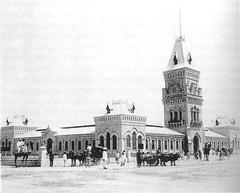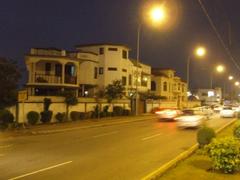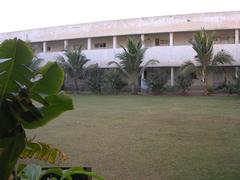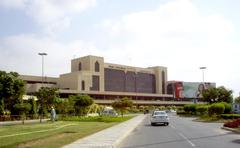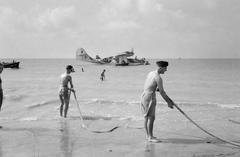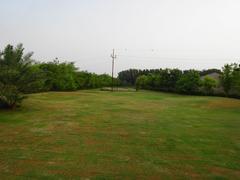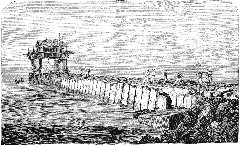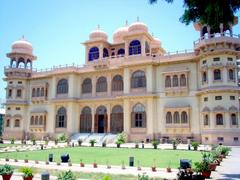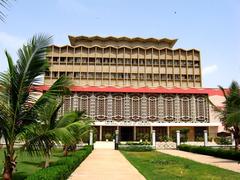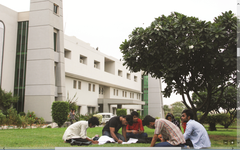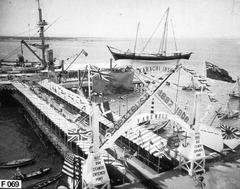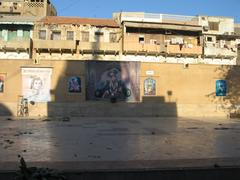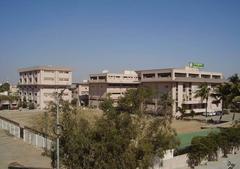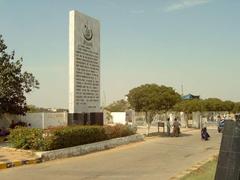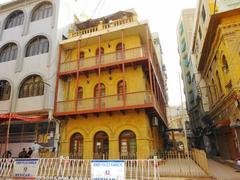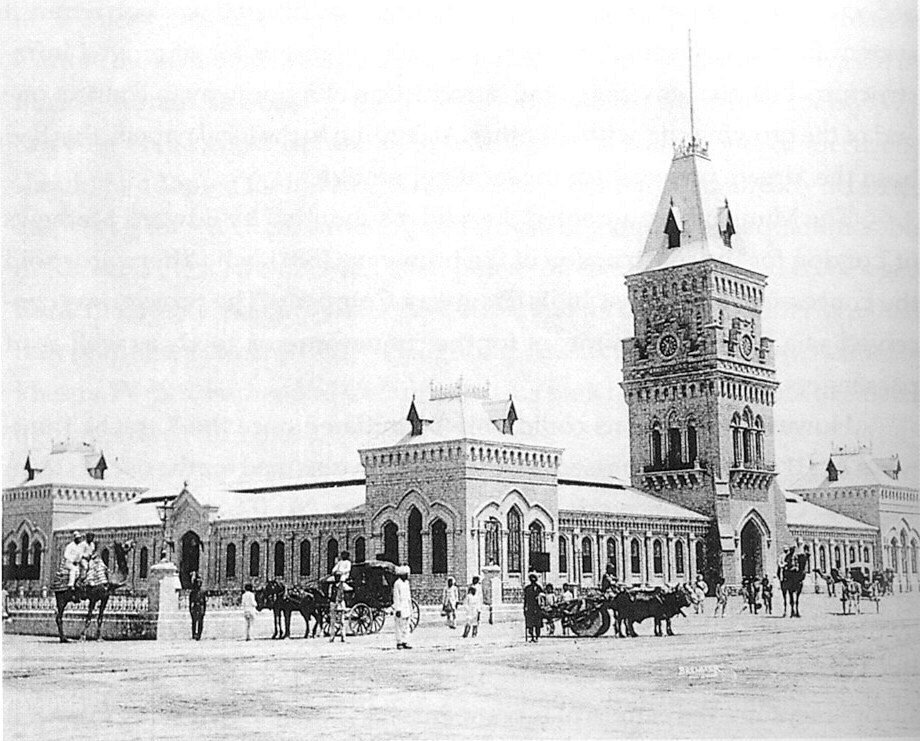
Empress Market Karachi: Visiting Hours, Tickets, and Historical Significance
Date: 15/06/2025
Introduction
Empress Market, nestled in the heart of Karachi’s historic Saddar district, is an enduring symbol of the city’s colonial past and vibrant present. This iconic marketplace is renowned not just for its stunning Indo-Gothic architecture, but also for its bustling stalls, cultural diversity, and pivotal role in Karachi’s urban economy. Built during the British Raj and named in honor of Queen Victoria, Empress Market is more than a shopping destination—it is a living monument where history, commerce, and community converge (Geo News; TravelSetu).
Historical Context
Colonial Origins and Foundation
The site of Empress Market is steeped in history, having served as a cantonment ground during the tumultuous period following the 1857 Sepoy Mutiny. The British authorities, wary of the location’s revolutionary significance, chose to overwrite its legacy by erecting a market, thereby transforming a place of resistance into one of commerce (Geo News).
The foundation stone was laid in 1884 by James Fergusson, the then-Governor of Bombay, and the market was completed in 1889, commemorating Queen Victoria’s Golden Jubilee (TravelSetu). Red sandstone imported from Jodhpur underscored the project’s scale and imperial ambition (ilaan.com).
Architectural Marvel
Designed by James Strachan, Karachi’s chief municipal engineer, and constructed by A.J. Attfield with local contractors, Empress Market exemplifies Indo-Gothic style. Its 120-foot clock tower, pointed arches, ornate ironwork, and four spacious galleries organized around a central courtyard create a grand, yet functional, commercial space (ilaan.com; TravelSetu). Originally, the market housed 280 shops, and its main entrance remains a prominent city landmark.
Socio-Economic Evolution
Initially serving colonial elites, Empress Market evolved into a bustling hub for all Karachiites, reflecting the city’s diverse ethnic composition—Sindhi, Balochi, Punjabi, Muhajir, and Parsi communities all converge here (Startup Pakistan; World City History). Today, the market and surrounding areas account for a significant share of Karachi’s informal economy and urban employment.
Empress Market Today
Visiting Hours and Entry
Empress Market is open daily, with visiting hours generally ranging from 7:00 AM to 10:00 PM, accommodating both early shoppers and evening explorers (KarachiViews). Entry is free for all visitors.
How to Get There
Centrally located in Saddar, Empress Market is accessible by car, taxi, rickshaw, and public transport. Ride-hailing services like Careem and Uber are also convenient. The Merewether Clock Tower, Frere Hall, and Karachi Zoo are within close proximity, making the market an ideal starting point for exploring Karachi’s heritage (Trip.com).
Accessibility
While efforts have been made to improve access, the market’s historic layout—with narrow aisles and steps—can be challenging for visitors with mobility impairments. It is advisable to visit with assistance if needed.
Exploring the Market
Market Layout and Atmosphere
Covering approximately 13,000 square feet, the market features four main galleries radiating from a central courtyard and nearly 280 shops (Wikipedia). The atmosphere is lively: vendors calling out, haggling customers, the aroma of spices and street food, and the visual spectacle of fresh produce, textiles, and household goods (TravelSetu).
Shopping Highlights
- Spices and Dry Fruits: The spice section is renowned for its variety, including local and imported spices essential in Pakistani cuisine. Vendors share tips and recipes, making shopping interactive (TravelSetu).
- Fresh Produce and Meats: Fruits, vegetables, and meats are sourced from across Pakistan.
- Textiles and Handicrafts: Traditional garments and souvenirs reflect Karachi’s cultural diversity (The Tourist Checklist).
- Pets and Birds: The adjacent pet market is popular, though animal welfare standards may differ from international expectations (Graana).
Bargaining is customary—vendors expect it, and it enhances the local shopping experience.
Culinary Experience
Street food stalls offer local favorites such as samosas, pakoras, jalebis, and kulfi. The market’s food section is an excellent place to sample Karachi’s culinary diversity, but visitors should choose busy stalls for freshness and practice good hygiene (TravelSetu).
Cultural and Community Significance
Empress Market is a vibrant urban commons where social, economic, and cultural exchanges thrive. It has served as a focal point for community gatherings, festival celebrations, and even public protests—most notably in response to the 2018 anti-encroachment drive, which sought to restore the market’s historic façade but also impacted many vendors’ livelihoods (Dawn; Supd Urban Economics).
The market is also a popular subject for artists, photographers, and filmmakers, who are drawn to its dynamic environment and architectural beauty.
Traveler Tips
- Best Time to Visit: Early morning for fewer crowds, evenings for a lively atmosphere.
- Dress Code: Modest attire is recommended. Women should cover arms and legs; men should avoid shorts.
- Safety: Remain vigilant for pickpockets, especially at peak times. Keep valuables secure and use ride-hailing apps or official taxis.
- Hygiene: Use hand sanitizer, avoid raw or unpackaged food, and bring bottled water. Public restrooms are limited.
- Cash: Most transactions are cash-based; carry small denominations.
- Photography: Ask permission before photographing vendors or stalls.
Nearby Attractions
- Frere Hall: Colonial-era building with gardens (about 1 km away).
- National Museum of Pakistan: Showcasing the nation’s history (1.8 km from the market).
- Burns Road Food Street: Famous for traditional Pakistani cuisine.
- Rainbow Center: Electronics and entertainment hub.
- Clifton Beach and Dolmen Mall: Seaside views and modern shopping.
Hotels such as the Karachi Marriott and Ramada Plaza are nearby, offering additional amenities (Trip.com).
Accessibility and Facilities
Empress Market’s historic design means accessibility is limited—there are few ramps, and aisles can be crowded. Seniors and visitors with mobility impairments should plan accordingly. Parking is scarce; public transport or ride-hailing is recommended.
Frequently Asked Questions (FAQ)
Q: What are Empress Market’s visiting hours?
A: Typically 7:00 AM to 10:00 PM daily (KarachiViews).
Q: Is there an entry fee or ticket required?
A: No, entry is free.
Q: What can I buy at Empress Market?
A: Spices, fresh produce, textiles, household goods, pets, and more.
Q: Can I take photographs?
A: Yes, but always ask permission before photographing individuals or vendors.
Q: Is the market accessible for people with disabilities?
A: There are some accessibility challenges due to the historic structure.
Q: Are guided tours available?
A: Yes, local operators sometimes offer guided walking tours.
Heritage Conservation and Urban Policy
Empress Market has been at the center of heritage debates, particularly following the 2018 anti-encroachment drive that removed over 1,000 illegal shops. Restoration efforts continue, aiming to preserve the architectural integrity while balancing the needs of vendors and the local economy (Dawn; Supd Urban Economics).
Final Tips and Summary
Empress Market is an essential Karachi destination, offering an immersive experience in history, culture, and commerce. Its Indo-Gothic architecture, diverse vendors, and culinary delights make it a highlight for any visitor. Plan your visit during daylight hours, practice standard safety precautions, respect local customs, and enjoy the rich tapestry of urban life that defines this historic market.
For up-to-date information on hours, events, and tours, consult resources like KarachiViews and TravelSetu.
Sources and Further Reading
- Geo News
- ilaan.com
- TravelSetu
- World City History
- Supd Urban Economics
- Dawn
- KarachiViews
- Graana
- Trip.com
- Dawn
- Wikipedia
- The Tourist Checklist
